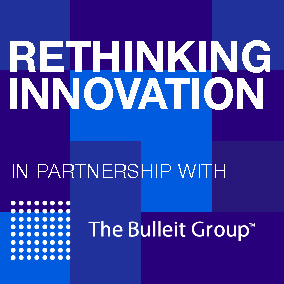The Bulleit Group 27 Nov 2018 // 6:14PM GMT

What does innovation look like? In today's world, innovation might conjure up visions of shiny robots, virtual reality, and flights to Mars, but at its core, the word simply means the introduction of something new.
Larger companies often get caught up in the idea that to stay relevant they must innovate—and innovate their offerings, more literally. However, more critical than the creation of new products and services is the spirit of innovation—the culture of innovation—that needs to flow throughout an entire company, from its employees to its branding, and the best way to do that is through communication.
"Every meaningful element of human progress has happened only because humans have shared ideas with each other and then collaborated to turn those ideas into reality." These words by Chris Anderson, the head and curator of TED Talks, encapsulate the spirit of innovation. The creation of something new never happens in a silo. It is the result of talking to people to solve a problem, add value, or fill a void. Technologies do not invent themselves, people do.
Startups do very well with innovation. They are built to quickly modify strategies and adapt business models according to new ideas. They source customer feedback to better serve their needs, encourage employee discussion to find new solutions to old problems, and talk regularly to new prospects, advisors, and industry experts.
When companies grow, they lose sight of this spirit of innovation. The corporate walls get bigger, and innovation becomes a segmented goal rather than a philosophy. It takes shape in research and development units and outsourced idea labs. But a company with an innovation department is very different from an innovative company.
A couple of years ago, a large tech company hired us to help them stand out among the competition. While this organization was building technology on par with its counterparts, that was not being communicated either to its users nor to its employees. We helped the organization devise a new communication plan that spanned content creation, media relations, and speaking opportunities with the goal of highlighting the real people behind the platform.
We worked directly with engineers and developers (rather than executives) to speak publicly about the company's technical achievements. Engineers, data scientists, and developers within the company saw themselves and their peers featured on the company blog, in press articles, and at events, which fostered a sense of entrepreneurship and continuous learning across the organization.
This not only shaped public perception about the business but also generated excitement within the organization where employees felt that their work was being seen and valued. The firm, in turn, became a place where employees could take risks, identify opportunities, and take action.
When an organization encourages entrepreneurial behavior in its employees, it encourages them to take bigger risks and think outside of the box—a crucial ingredient for innovation. In the early stage of a company, innovative ideas tend to come from the top, but it becomes much less common in later stage companies. The most successful leaders are not those who come up with the ideas themselves, but rather those who inspire and encourage their employees to generate them.
Similarly, Bloomberg's early-stage venture firm Bloomberg Beta informs the organization's understanding of the future of work. Cutting-edge technology is already baked into Bloomberg L.P., so the VC firm acts as a research arm and source of innovation not from a technical standpoint but rather from a social impact point of view. Not to be confused with an R&D department, Bloomberg Beta acts as an independent startup with the same ethos of collaborating, communicating change, and inspiring innovation.
Our work with Bloomberg Beta focuses on positioning the firm as a thought leader on the future of work and culture of innovation. When machine intelligence first went mainstream, the VC quickly caught onto the potential for this new technology to completely disrupt the way people work. Our messaging then centered around how companies need to apply the culture of innovation within the organizational structure of the workplace rather than concentrate only updating their products.
In parallel, Bloomberg Beta needed to embrace this workplace innovation ethos. The company documents its operations publicly on Github in a move to promote transparency—a key theme in the future of work. The firm also collaborates with non-profits and think tanks, such as New America, to increase awareness of workplace changes both in and outside of the Silicon Valley echo chamber. Through this, Bloomberg Beta started encouraging companies of all shapes, sizes, and industries to think more critically about how they innovate.
"Ideas that could solve our toughest problems often remain invisible because the brilliant people in whose minds they reside lack the confidence or the know-how to share those ideas effectively," wrote Chris Anderson. Companies that promote entrepreneurship, lifelong learning, adaptation, openness, and creativity will be able to solve customer challenges better than the rest. Communication is the vessel. A culture of innovation will be the result.
The World Economic Forum 2018 Future of Jobs Report underscored the value of creativity, critical thinking, innovation, and active learning in tomorrow's workplace. The new job market needs creators, builders, communicators, and storytellers who embrace the spirit of innovation.
While all companies view innovation as a strategic imperative, very few have innovation ingrained into all corners of their work. The ones that do will be the ones that succeed 20 years from now.
This article is part of a series exploring the topic of innovation in partnership with the Bulleit Group. You can read more from the series here.


































.jpg)

















